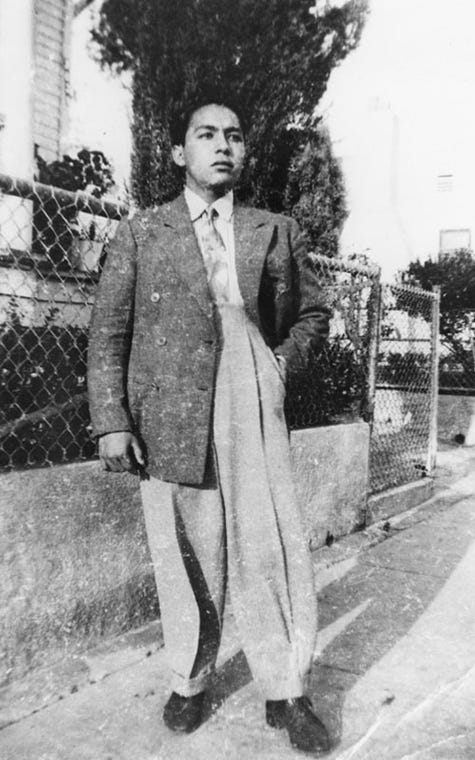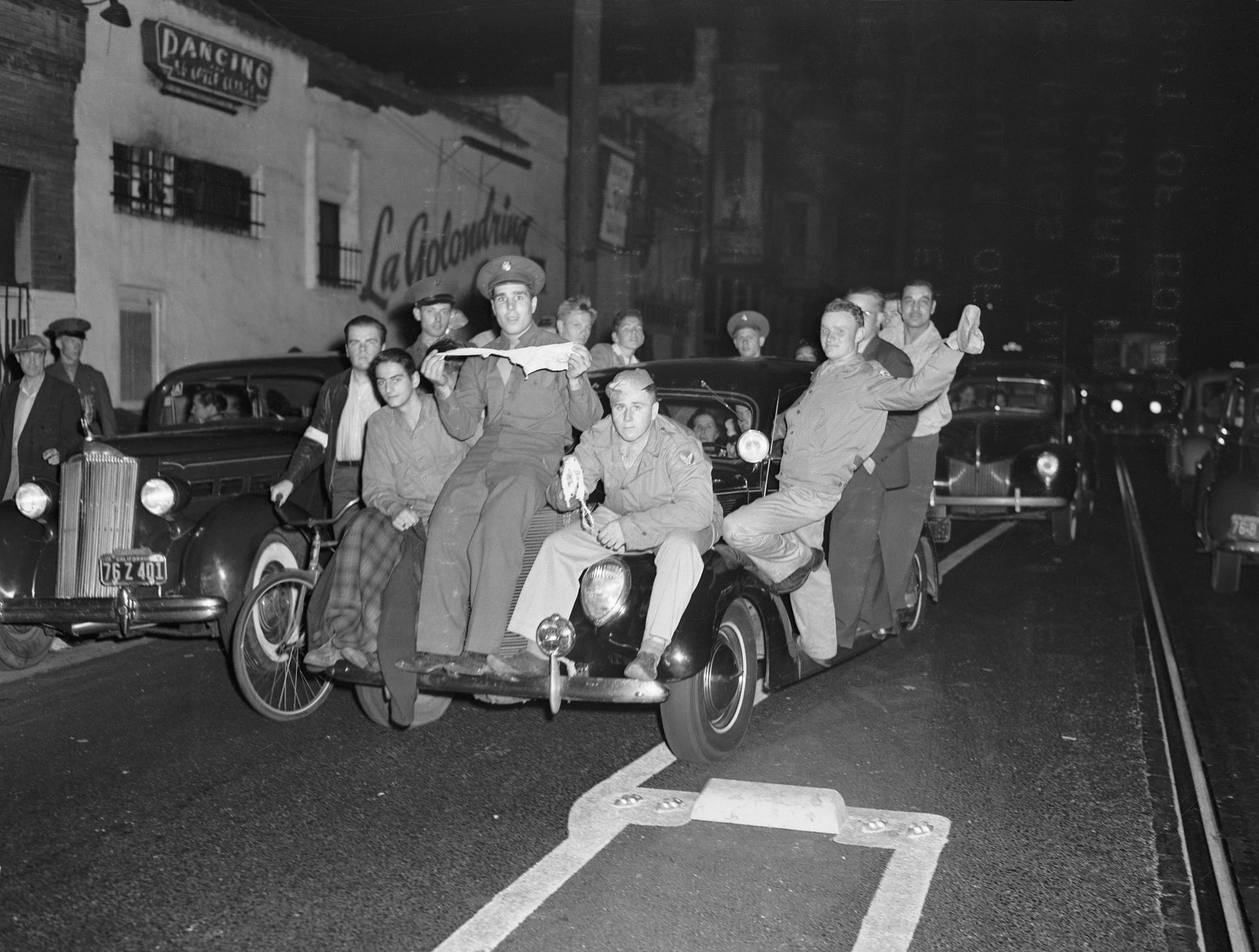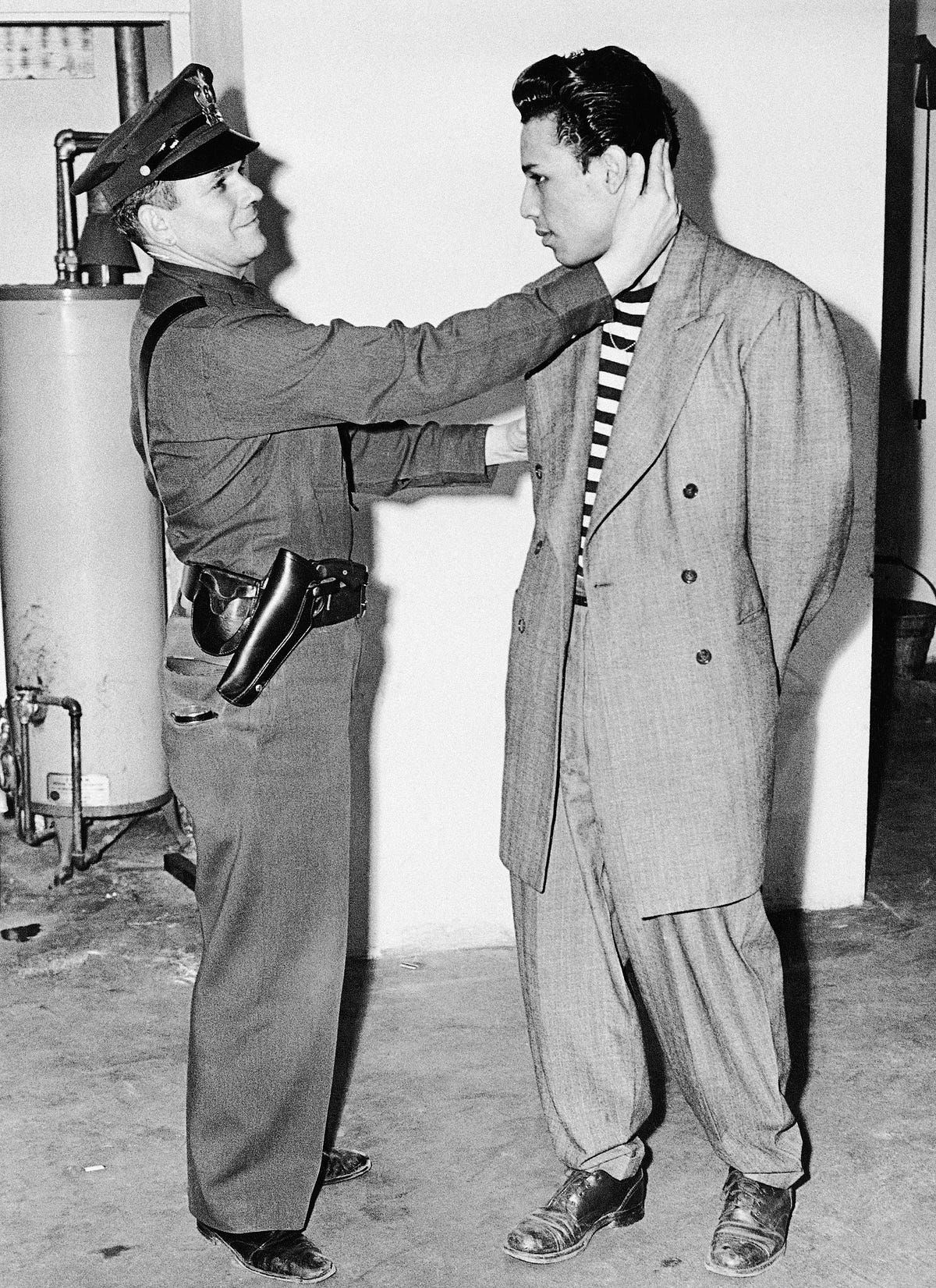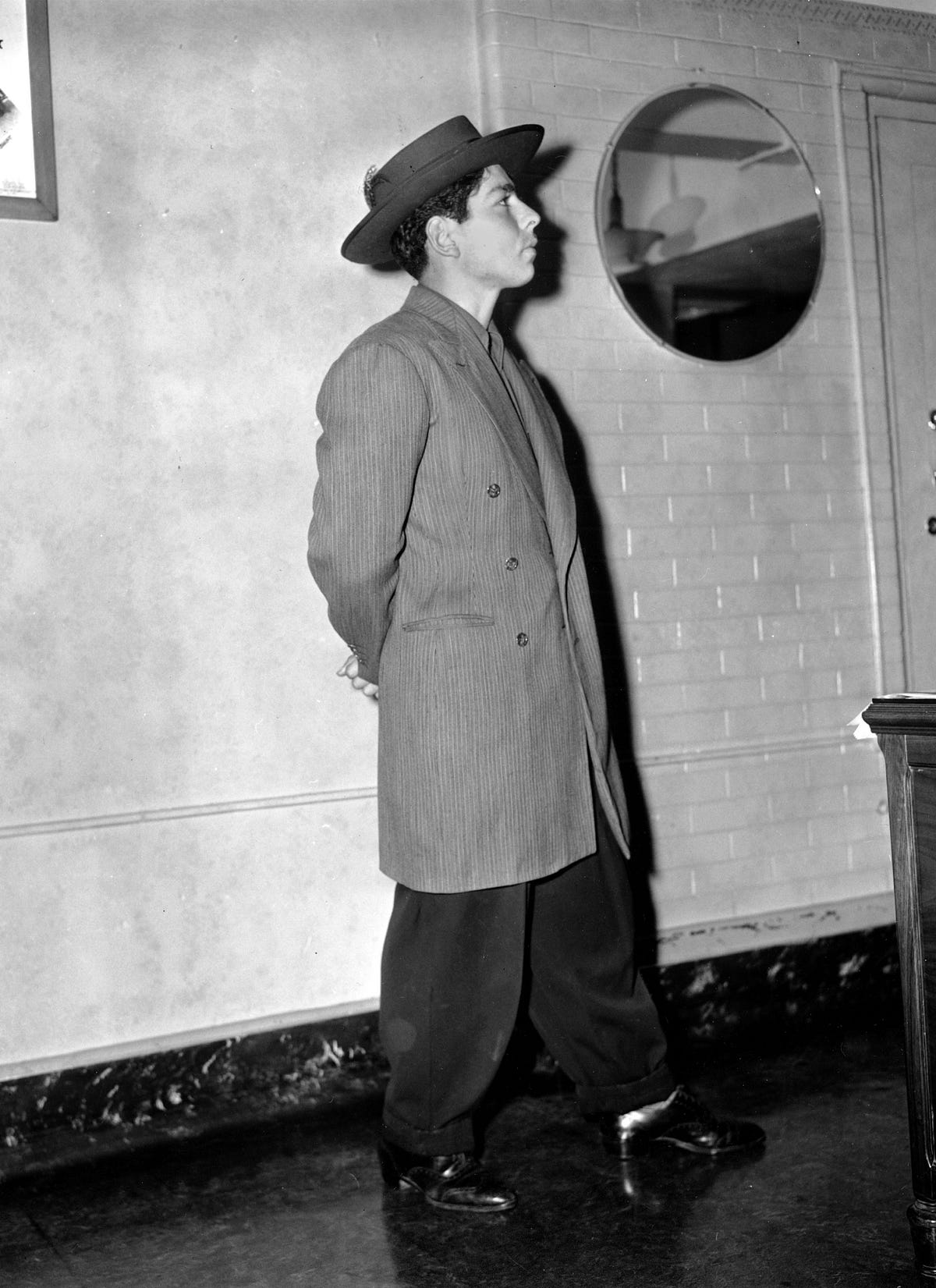{UAH} Photos: The L.A. Zoot Suit Riots of 1943 were a targeted attack on Mexican and nonwhite youths
Photos: The L.A. Zoot Suit Riots of 1943 were a targeted attack on Mexican and nonwhite youths
A bloody melee that pitted hundreds of U.S. servicemen against the "freak" zoot suiters
The Zoot Suit Riots of 1943 weren't a riot in the usual sense of the word. More like a witch hunt. A twisted expression of misguided vigilante justice. A xenophobic release valve for the stresses of war. That year, Los Angeles was already simmering with racial tension. With many Japanese shipped off to forced internment, popular ire had turned to the entrenched Mexican American communities of East L.A., where media-induced panic over crime and immigration was colliding with the heightened nationalism of a country at war. When a group of sailors from the newly opened Naval Reserve Armory in Chavez Ravine clashed with a group of local youth that summer, things only got worse.
Young Angelenos in the early forties were already being profiled as gang members for wearing baggy clothes and off-kilter hats. The zoot suit, a swaggering subversion of middle-class conservatism first popularized by black jazz musicians, had been adopted by L.A.'s homegrown pachuco subculture, where it quickly became enmeshed in public perceptions of immigrant communities and crime. But in the wake of wartime fabric rationing, sporting a zoot suit also defied patriotic expectations. In June of that year, these tensions boiled over in a bloody melee that pitted hundreds of U.S. servicemen against local youth, thrusting the zoot suit into the national spotlight.
It happened on the night of June 3, 1943, when a group of sailors from the Chavez Ravine Armory got into a scuffle with a handful of local pachucos. Word spread quickly through the barracks, and servicemen were soon roaming the streets of downtown Los Angeles, armed with makeshift weapons and targeting anyone wearing a zoot suit. In the days that followed, hundreds of white servicemen — most hailing from Middle America and trained in a still segregated armed forces — fanned out across the city, wreaking more havoc on similar targets. As one journalist witness to the chaos wrote, "Pushing its way into the important motion picture theaters, the mob ordered the management to turn on the house lights and then ran up and down the aisles dragging Mexicans out of their seats. Streetcars were halted while Mexicans, and some Filipinos and Negroes, were jerked from their seats, pushed into the streets and beaten with a sadistic frenzy."
Coming on the heels of a so-called "wave of hoodlumism" bemoaned by local newspapers, this violent response to L.A.'s rapidly diversifying urban population was allowed to continue unchecked for four full days. LAPD responded by arresting as many as 500 of the victims, ostensibly for their own protection. The Los Angeles Times heralded the sailors' actions as "a great moral lesson" for the "freak" zoot suiters, who, according the Minneapolis Stara week later, were undeniably "guilty of a number of killings and rapes."
The Zoot Suit Riots were a dark moment in the history of L.A. and West Coast race relations. But unlike later riots in the city, they say less about the justified anger of exploited communities and more about the strict homogeneity of American culture at the time. Status quo anxiety left little patience for the perceived garishness of nonwhites during wartime, and discrimination eventually gave way to prolonged physical violence. It's an attitude that persists today, if less tangibly, in certain fashion-based preconceptions of minority youth who dare to present themselves as being at odds with the dominant culture.
At Timeline, we reveal the forces that shaped America's past and present. Photography is at the heart of this mission. Our photo team and the Timeline community are scouring archives for the most visually arresting and socially important images, and using them to explain how we got to now. To help us tell more stories, and to surface more amazing photography, please consider becoming a Timeline member.


"If I'm right, and I'm pretty sure I am," writes Dr. Epstein, Trump is capable of only a minimal level of analytical or critical thinking." (Photo: DonkeyHotey/flickr/cc)
Disclaimer:Everyone posting to this Forum bears the sole responsibility for any legal consequences of his or her postings, and hence statements and facts must be presented responsibly. Your continued membership signifies that you agree to this disclaimer and pledge to abide by our Rules and Guidelines.To unsubscribe from this group, send email to: ugandans-at-heart+unsubscribe@googlegroups.com




















0 comments:
Post a Comment